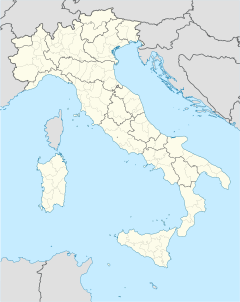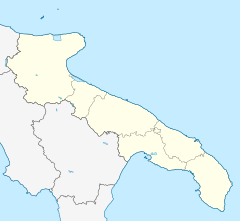Andria–Corato train collision

An ELT 200 train of the type involved in the crash, seen near Bitonto on a dual-track section of the Bari–Barletta line
|
|
| Date | 12 July 2016 |
|---|---|
| Time | 11:06 CEST (09:06 UTC) |
| Location | Andria, Apulia |
| Coordinates | 41°11′51.5″N 16°21′36.8″E / 41.197639°N 16.360222°ECoordinates: 41°11′51.5″N 16°21′36.8″E / 41.197639°N 16.360222°E |
| Country | Italy |
| Rail line | Bari–Barletta railway |
| Operator | Ferrotramviaria |
| Type of incident | Head-on collision |
| Cause | Under investigation |
| Statistics | |
| Trains | 2 |
| Deaths | 23 |
| Injuries | 54 |
The Andria–Corato train collision happened late in the morning of 12 July 2016 when two regional passenger trains on a single-track section of the Bari–Barletta railway collided head-on between the towns of Andria and Corato in the Apulia region of southern Italy. Twenty-three people were killed and 54 injured. The stretch of track is operated by regional rail company Ferrotramviaria.
The Bari–Barletta line is laid to standard gauge, with 3,000 V DC overhead electrification. Since the 1990s the line has been refurbished, and is mostly upgraded to double track. The accident occurred between the Corato and Andria stations, on the remaining single-track section of the line between Ruvo di Puglia and Barletta. That 37-kilometre (23 mi) section operates with "telephonic block" signalling, where station masters must notify the arrival of trains and inform drivers whether it is safe to proceed.EU funds were made available in April 2012 to upgrade this remaining section to double track, but at the time of the accident the work had only recently been put for tender.
The collision occurred at 11:06local time (09:06 UTC) in the countryside, adjacent to an olive grove, approximately 6 kilometres (3.7 mi) from Andria station and 51 km (32 mi) from Bari. (Many earlier reports mentioned the time 11:38 and also other train service numbers than those later reported. But this seems to have been a mistake.) The trains involved were a Stadler FLIRT ETR 340 (service ET1016 from Bari to Barletta) and an Alstom Coradia ELT 200 (service ET1021 from Barletta to Bari), each being a four-carriage multiple unit. They were travelling at speeds of up to 100 kilometres per hour (62 mph) in opposite directions: ET1021 travelling south-east from Andria and ET1016 north-west from Corato. The crash occurred on a curve, giving neither driver any chance to spot the other train, or attempt an emergency braking, before the collision. The first two carriages and the fore part of the third one of ET1016, and the leading carriage of ET1021, disintegrated in the impact; the second carriage of ET1021 partially derailed and was heavily damaged; the other cars of both trains remained on track almost intact.
...
Wikipedia


